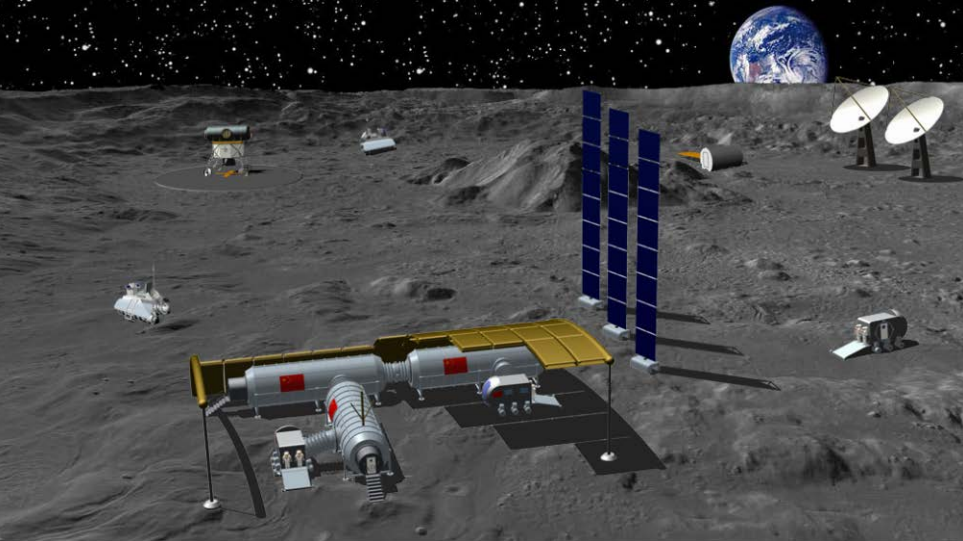
South Africa’s Entrance into China-Led ILRS Project for a Permanent Moon Base
South Africa has taken a significant step forward in space exploration by formally joining the International Lunar Research Station Cooperation (ILRS), a project led by China aimed at establishing a permanent lunar base. This historic development was marked by the signing of a Memorandum of Understanding (MoU) between the China National Space Administration (CNSA) and the South African National Space Agency (SANSA) on September 1st. The signing ceremony, presided over by Chinese Ambassador to South Africa, Chen Xiaodong, and Humbulani Mudau, CEO of SANSA, solidified South Africa’s commitment to this ambitious lunar endeavor.
The announcement of this partnership was made by the CNSA on September 7th, underlining its significance in the realm of international space cooperation. This collaboration comes on the heels of bilateral agreements signed during Chinese President Xi Jinping’s state visit to South Africa on August 22nd, which coincided with the hosting of the 2023 BRICS Summit. The ILRS project, with South Africa as its newest member, is poised to usher in a new era of lunar exploration and scientific advancement.
The CNSA-SANSA MoU encompasses a wide range of collaborative activities, including the demonstration, implementation, operation, and application of the ILRS. Furthermore, it encompasses training and various other areas of mutual interest. This collaboration represents a substantial leap forward in the development of the ILRS, which seeks to establish a permanent lunar base by the 2030s. Notably, this initiative is viewed as a China-led parallel project and a potential competitor to the NASA-led Artemis Program.
China’s ambitious lunar exploration roadmap includes a series of robotic missions scheduled for the 2020s, which serve as precursors to the construction of the lunar base. These missions include the 2026 Chang’e-7 lunar south pole mission and the 2028 Chang’e-8 in-situ resource utilization and 3D-printing technology test mission. In the 2030s, five major infrastructure missions utilizing super heavy-lift launchers will be launched to construct the lunar base. While initially operated by robots, the lunar base is expected to host astronauts in the future. China’s human spaceflight agency has declared its intention to land astronauts on the moon before 2023.
The ILRS project originally had Russian involvement through the Luna 25 mission, but unfortunately, it experienced a crash into the lunar surface following an anomalous lunar orbit burn. Consequently, China has taken on a more prominent leadership role in the project, particularly since Russia’s invasion of Ukraine. China is currently in the process of establishing an organization known as ILRSCO (International Lunar Research Station Cooperation Organization) to coordinate and oversee the international moon base initiative.
China has set an ambitious timeline, aiming to complete the signing of agreements and MoUs with space agencies and organizations from around the world as founding members of ILRSCO by October of the current year. The CNSA has been actively engaging in diplomatic efforts to expand this collaborative network, signing joint ILRS statements with various entities, including the Asia-Pacific Space Cooperation Organization (APSCO), Swiss firm nanoSPACE AG, and the Hawaii-based International Lunar Observatory Association (ILOA). Pakistan has also expressed its intent to join the ILRS.
The ILRSCO headquarters will be situated in Deep Space Science City, located in Hefei, Anhui province. This facility will play a crucial role in facilitating the design simulation, operation control, data processing, sample storage and research, as well as serving as an international training center.
In parallel to these developments, the United States-led Artemis project has garnered support from 28 countries, with recent additions including Argentina, India, and Ecuador, who signed up to the Artemis Accords. These accords serve as the political framework underpinning the Artemis initiative and signify the United States’ commitment to international collaboration in lunar exploration.
South Africa’s formal entry into the China-led ILRS project marks a momentous occasion in the history of space exploration. As the world’s attention turns toward the moon and beyond, the collaboration between nations in endeavors like the ILRS and Artemis projects promises to unlock new frontiers and drive scientific progress for the benefit of all humanity. With each partnership and agreement signed, the dream of a permanent lunar presence comes closer to realization, heralding a bright future for space exploration.







